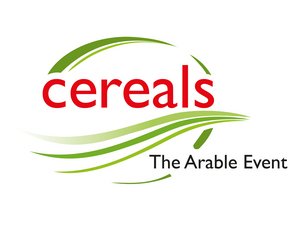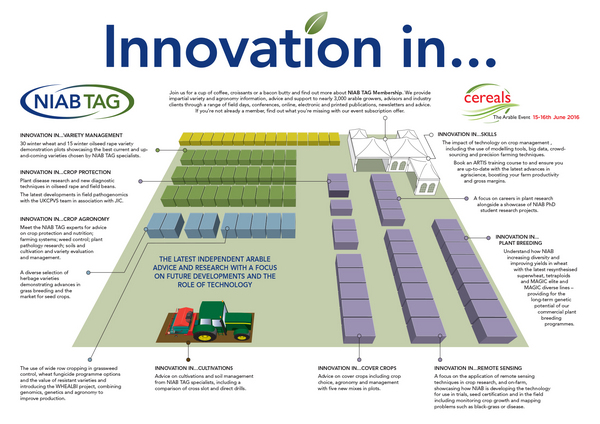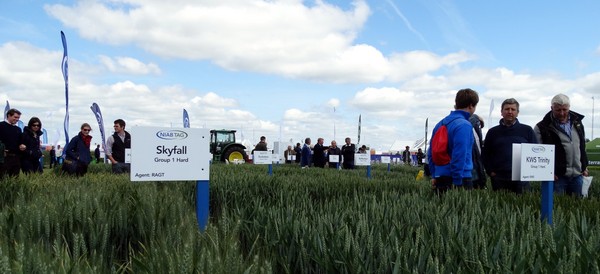 NIAB TAG is providing a tick list of agricultural innovation for growers and agronomists to check out at this year’s Cereals Event in Cambridgeshire in June.
NIAB TAG is providing a tick list of agricultural innovation for growers and agronomists to check out at this year’s Cereals Event in Cambridgeshire in June.
Under the tagline ‘Innovation In…’ the impact of technology on crop management, including the use of modelling tools, remote sensing equipment, big data, crowd-sourcing and precision farming techniques, will feature on the NIAB TAG stand alongside the perennial favourites such as the winter wheat and winter oilseed rape variety demonstration plots.
The innovation theme continues with a look at the latest plant disease research with new diagnostic techniques in oilseed rape and field beans and the application of field pathogenomics in the detection of new races of yellow rust. And finally visitors can find out how NIAB’s genetics and breeding team is increasing diversity and improving yields in wheat with the latest resynthesised superwheat, tetraploids and MAGIC elite and MAGIC diverse lines - providing for the long-term genetic potential of the UK’s commercial plant breeding programmes.

NIAB Technical Director Bill Clark says “We often hear that the need for innovation in arable agriculture has never been greater, driven by the challenges of global food security, climate change and resource conservation. Yes, this is a vitally important time for crop innovation and there are some truly exciting scientific breakthroughs alongside new agronomic tools and technology being developed. But UK growers need to see these innovations in action, understand how they can and will be put into practice on farm and the economic and agronomic benefits in their use, all of which we will be showing on our stand at Cereals.”
Remote sensing
This includes a focus on the application of remote sensing techniques in crop research and on-farm. Against a backdrop of physically and visually different varieties NIAB will show how it is developing these technologies for use in research plot measurements, seed inspection and certification and in the field including monitoring crop growth and mapping problems such as black-grass or disease.
Researcher Dr Robert Jackson is looking for answers from growers. “Innovation works both ways. By showing how we use remote sensing, we hope to inspire visitors to tell us how they could use similar techniques in practice on their farms in ways that we may not have considered!”
Soils, rotations and cultivations
One favourite exhibit has moved this year. The success of the soil hole has meant it has been promoted to its own area 100 m along from the main stand. NIAB TAG’s Ron Stobart and NIAB CUF’s Dr Mark Stalham, working with Rothamsted Research soil scientists, will be demonstrating in a larger walk-through pit for visitors.
Ron Stobart says: “Our 8 m long, 4 m wide and 1.2m deep walk-through soil pit is a unique opportunity for visitors to check out the Cereals Event site soil profile at eye level and study the rooting of a range of cover crop and cereal crops.
“We are going to show how a well-structured soil can help water infiltration and aid moisture retention, demonstrate how to increase soil aeration for root growth and biological function and help growers improve the workability of their soil.” A subsoiler will also be pulled through the soil providing a backdrop to advice on cultivations and rotations.
Both stands will feature cover crop mixes, including plots of tillage radish, a mix of crimson clover, black medick and vetch as well as buckwheat and phacelia, alongside guidance to improve the effectiveness of cover cropping strategies and which rotations will benefit the most from cover crops.
“NIAB TAG research over the past decade has shown the benefits of cover crops include increased soil organic matter and soil biodiversity, protecting the soil surface from rainfall erosion, reducing nitrate leaching, improved soil structure and enhancing wildlife and the environment,” says Mr Stobart.
NIAB TAG at the 2016 Cereals Event - stand summary
NIAB TAG will be providing the latest independent arable advice and research with a focus on future developments and the role of technology, including:
- variety demonstration plots - 15 winter oilseed rape varieties with Simon Kightley advising on variety choice for oilseed rape, linseed, peas and beans, and Clare Leaman providing expert advice on winter wheat variety choice for 2016 with thirty established and new varieties. Simon and Clare will be supported on the variety demonstration plots by other NIAB TAG specialists and TAG-Consulting agronomists;
- advice on cover crops including crop choice, agronomy and management with five new mixes in plots;
- use of remote sensing techniques in crop research and on-farm;
- latest developments on yellow rust with the UKCPVS team;
- a diverse selection of herbage varieties demonstrating advances in grass breeding and the market for seed crops;
- use of wide-row cropping in grassweed control;
- wheat fungicide programme options and the value of resistant varieties;
- how wheat pre-breeding research is increasing diversity and improving yields, including superwheat, tetraploids and MAGIC wheat lines;
- impact of technology on crop management, including the use of modelling tools, big data, crowd-sourcing and precision farming techniques alongside how ARTIS training courses can ensure you are up-to-date with the latest advances;
- advice on soil management, rotations, cultivations and fertility building, including the new soil hole stand in association with Rothamsted Research; and
- NIAB TAG membership services including the latest crop production advice and farmer-led research, field days, agronomy trials results, unique regional variety information and weekly agronomy updates through the season.

